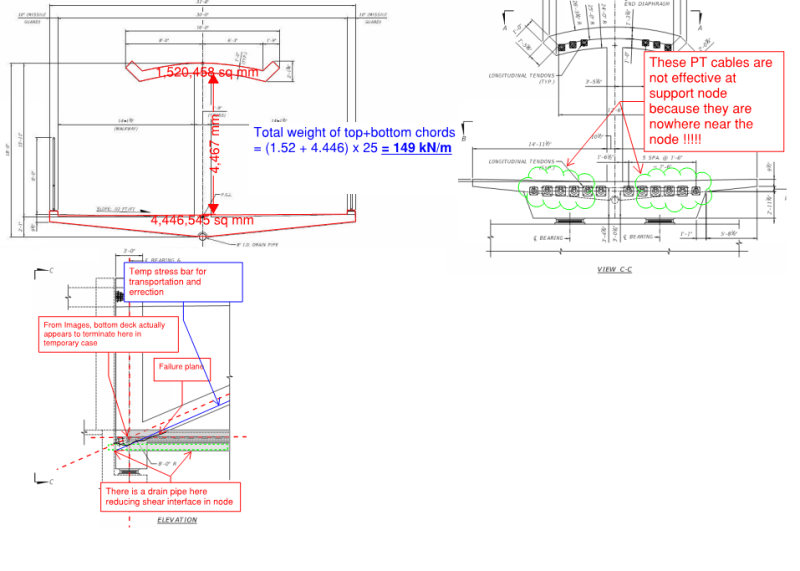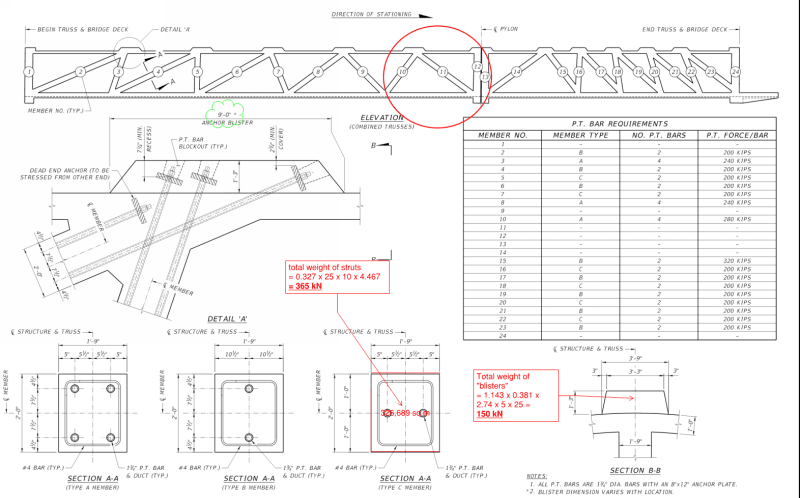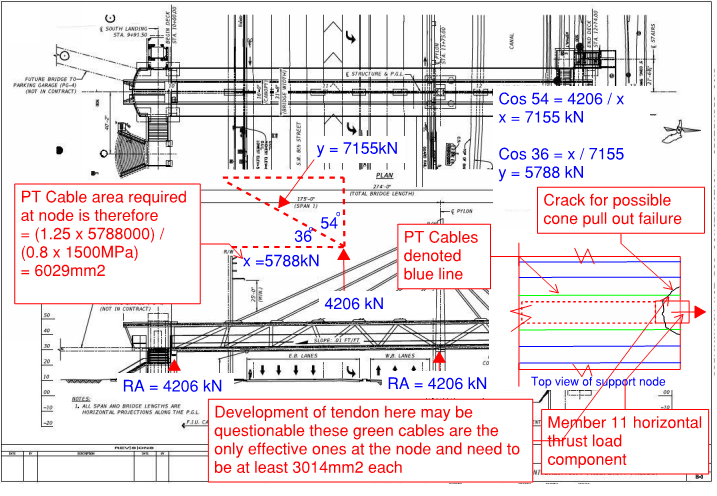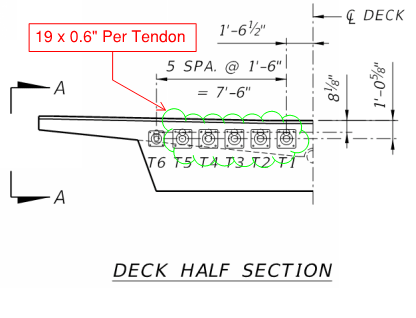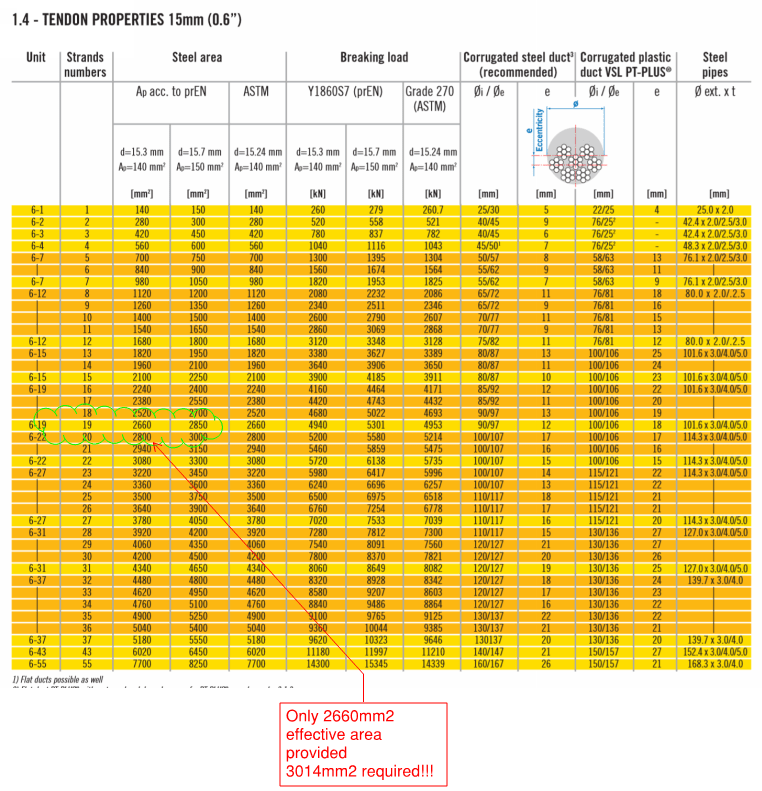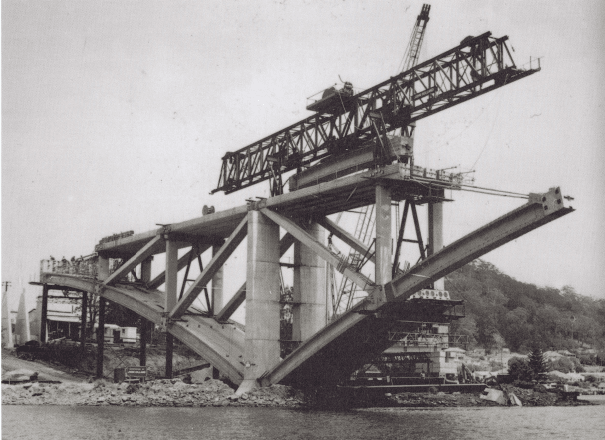Most opinions are agreed on member 11 to be problematic.
The evidence in front of our eyes are the canopy (upper deck and top chord of the truss) and the walkway (lower deck and bottom chord of the truss) are still reasonable intact and in one piece. Some truss members could not be seen in the north half and some appear to have punch through the roof.
The important Member 11 actually is still intact and lied behind the folded canopy with the broke off end pointing upward after it has pulled/sheared off from the walkway which is resting on the ground. The PT duct has come off by breaking free all the stirrups (shear reinforcement).
The design drawing shows the walkway has been post-tension both longitudinally with 12 PT ducts and transversely with PT at 2' 6" centers. That explains it is still in one piece lying on the ground.
Thus the joint of member 11 has broken from the walkway which is 31ft wide acting as the bottom chord for a truss of only approximately 2ft wide. The first question to any designer is how much width of the walkway can successfully interact effectively with the middle truss. There are guidance in the codes for that.
Some serious reinforcement would be required to dissipate the force in the member 11 into the bottom and top chords of the truss?
The broken concrete of member 11 in the photos show only a few small diameter bars.
If the structure has been analyzed as a rigid frame, which I cannot see any other alternative, it is the designer's duty to make the joint rigid enough to transmit the shear forces and bending moments.
Due to the changes of transporter positions Member 11 was in tension due to one bay free hanging like a cantilever. It is possible that the designer mitigated this change by adding PT ducts, which were not listed in the original design drawings. When the bridge was supported finally on the two end abutments the axial force in Member 11 changed to compression so it would have been a need to adjust the bolts by tightening it.
The member 12 and its connected top chord canopy are redundant as the structure without them can still work like a standard Warren truss. The joint in the bottom of member 11 must be adequately restrained or it can shear outward to trigger a failure. The photos, provided by gwideman on earlier post on 21 Mar 18 04:50, of the fully exposed bottom end of Member 11 does not show evidence that the joint there has been adequately reinforced to dissipate the force, shear and bending.
It is possible that Member 11 and 12 became detached from the walkway during the collapse but the same photos show the top of Member 11 still attached to the top chord or canopy which has a much more robust joint arrangement. However the canopy folded just before the robust joint section.
The broken-off end of Member 11 has rebar I estimate mostly small diameters like 5/8" to 3/4" and does contain any transverse PT duct or tendon. The densely spaced 67 number of transverse PT casing has a concrete cover of 3.75". This could suggest the Member 11 could have shear off outward to the North with a layer of maximum 3.75" of the top concrete from the walkway. The downstand beam here is also only 2'10.5" wide. The south side, with a 3'6" downstand beam did not collapse and still have the canopy and walkway separated by middle truss after the collapse.
There is no code to help a designer on how much steel reinforcement to put in to dissipate the stress. It is down to experience and to realize the design assumption that the joints are rigid enough. When the reinforcement drawings are available a more definitive assessment could then be made.
The evidence so far points to the Member 11 wasn't adequately reinforced/connected to the 2'10.5" wide downstand beam and the walkway. May be the embedded longitudinal PT anchors were in the way but the designer must have a scheme to pass the axial tension (occurred during swingin-in) and then compression (in service) into the walkway because the truss system lies in the middle empty 3'1" corridor where there is no longitudinal PT system.

